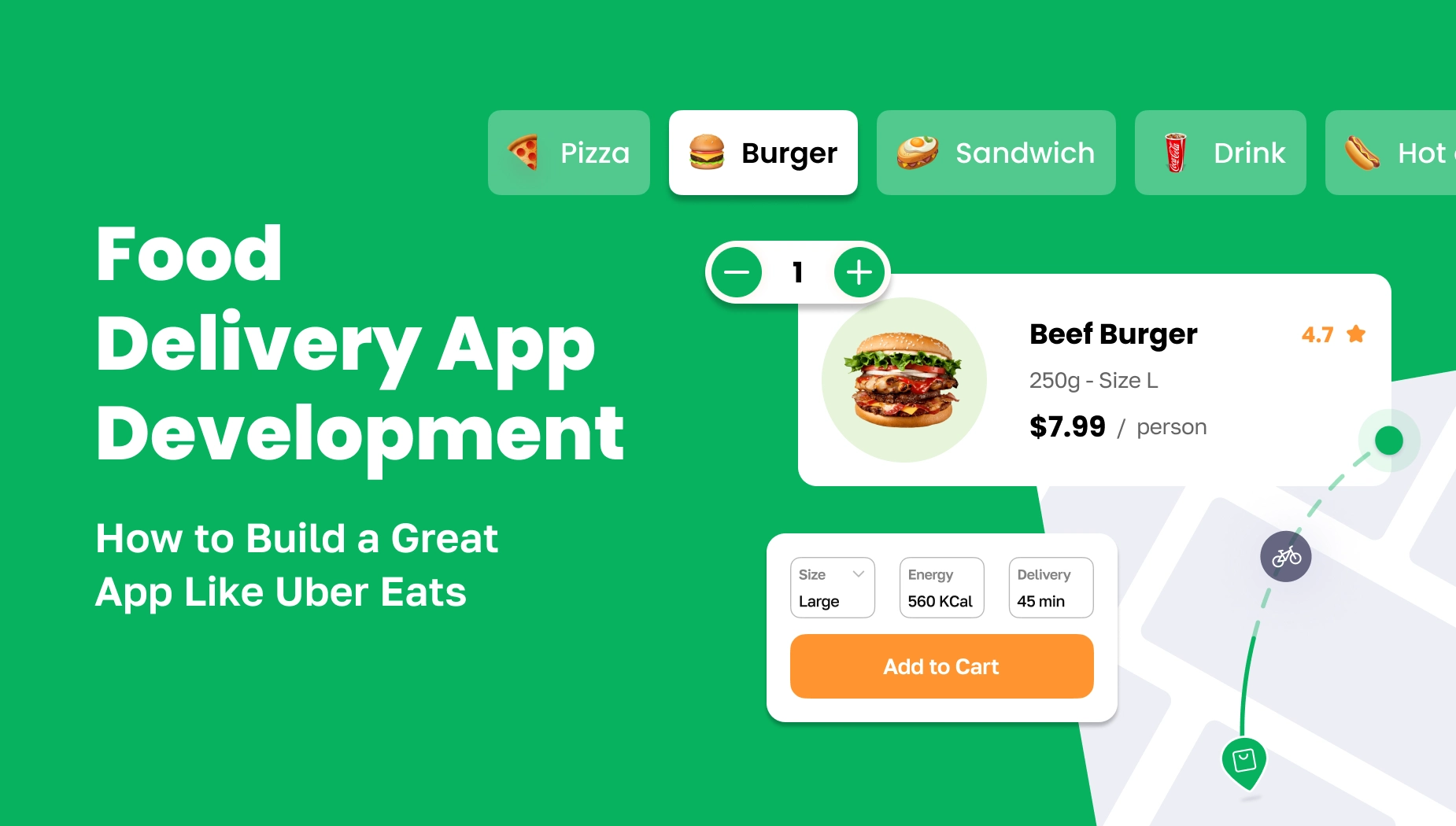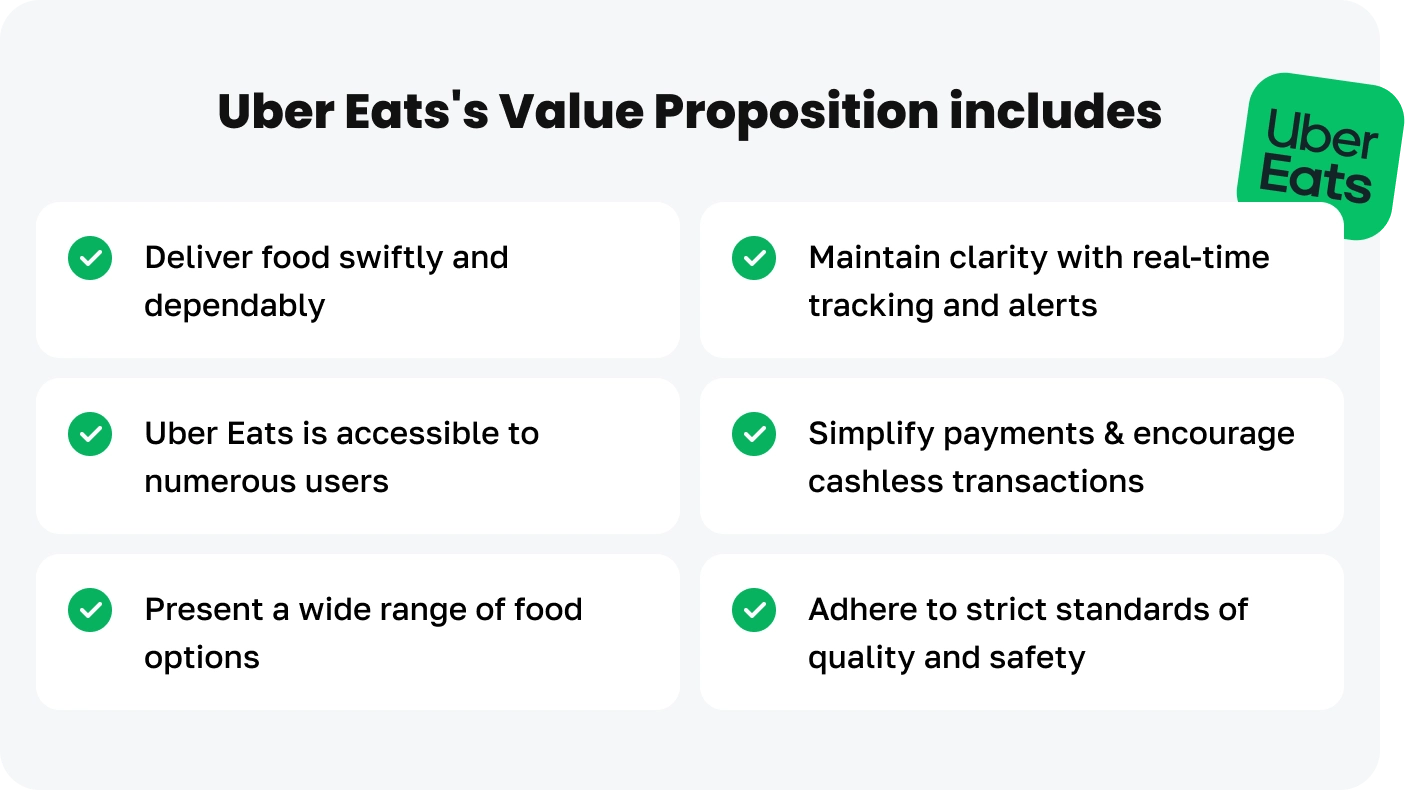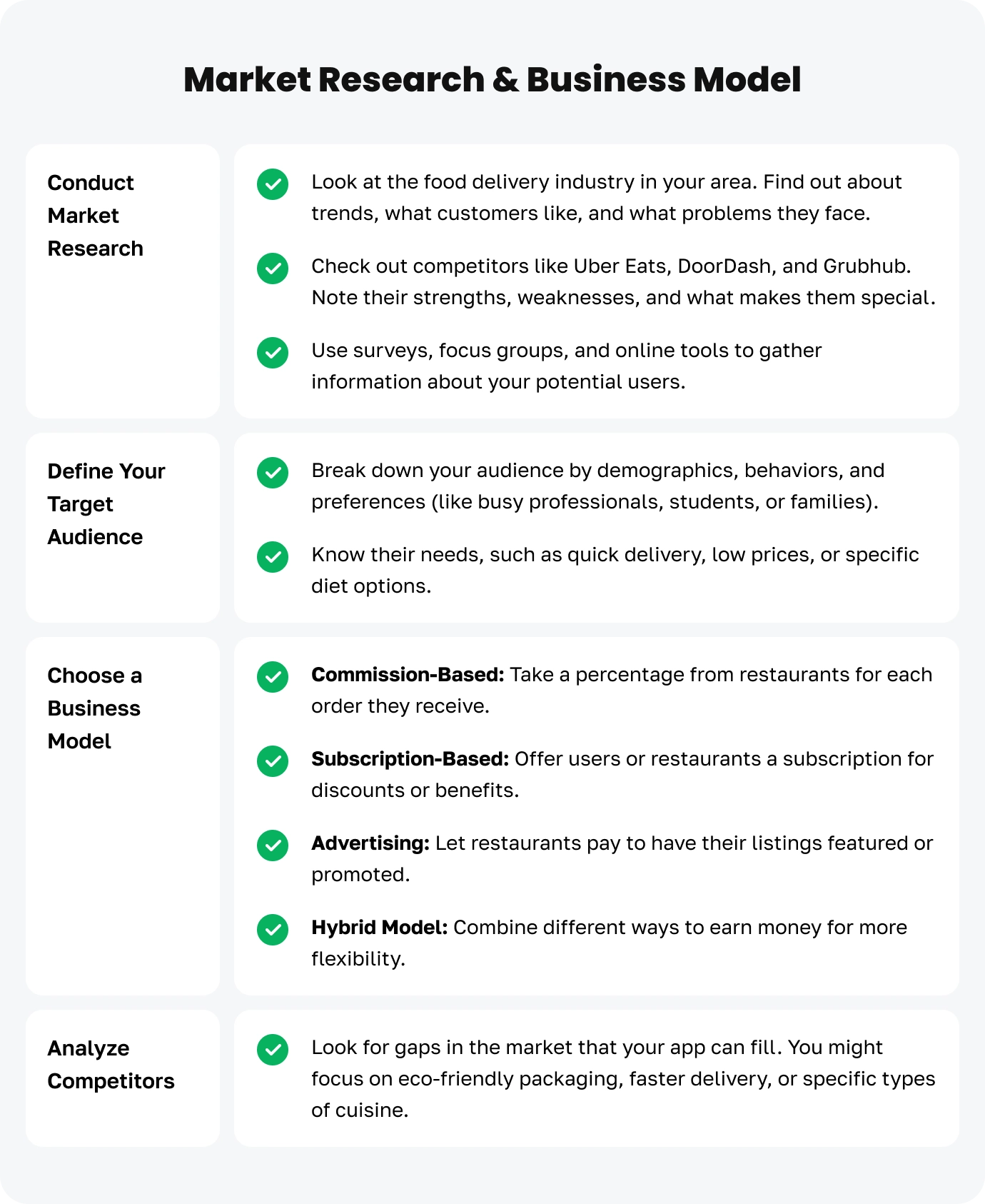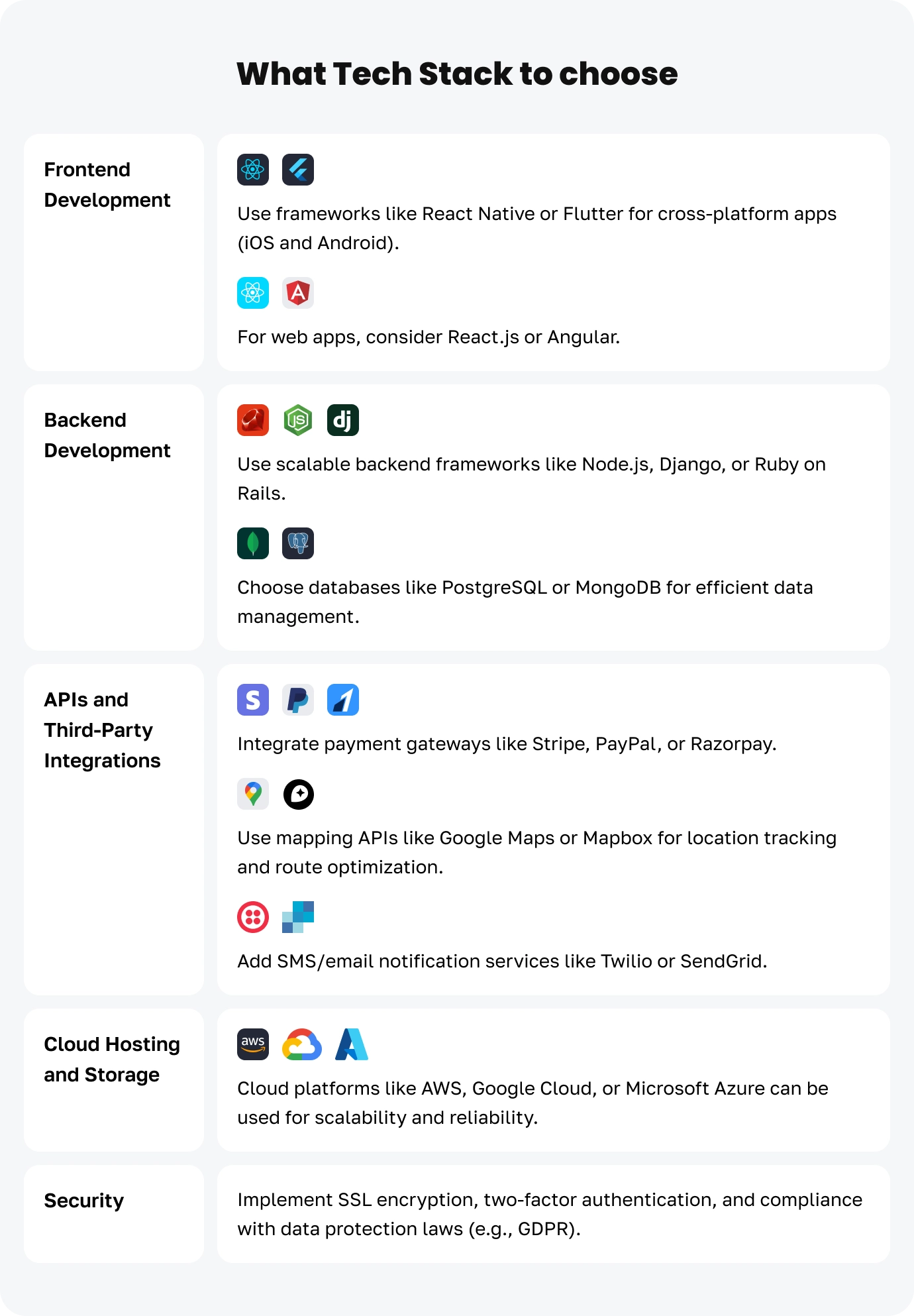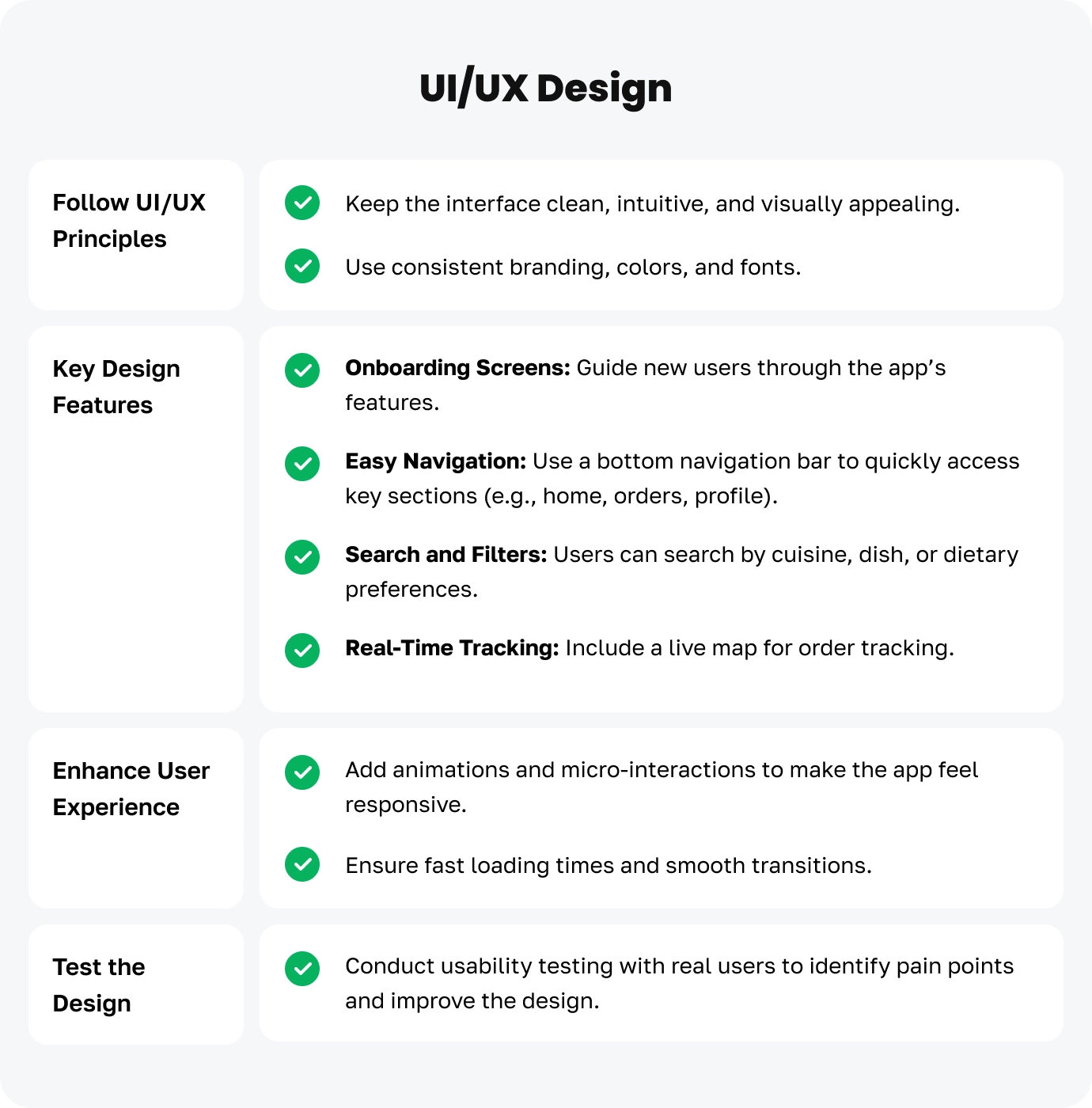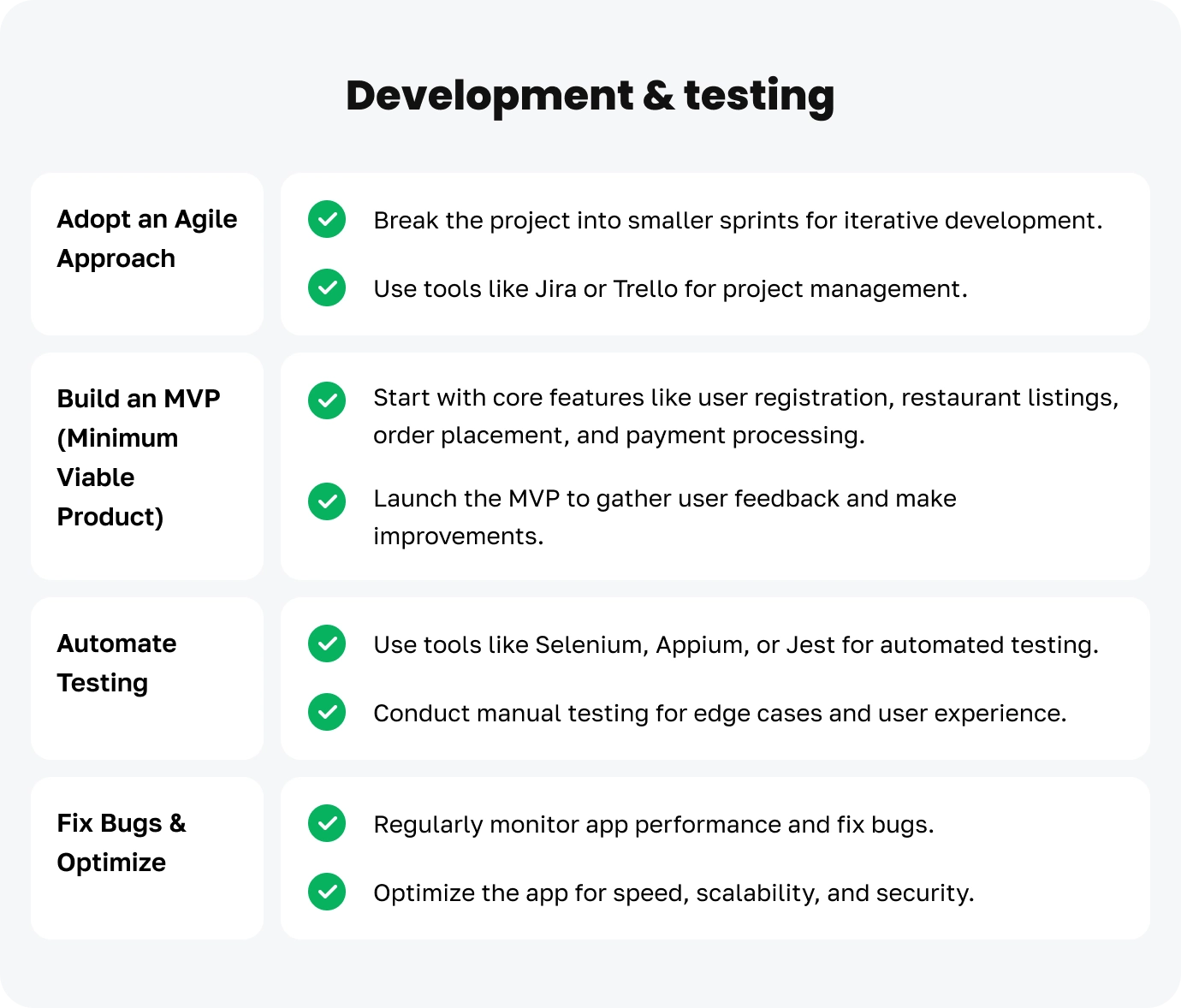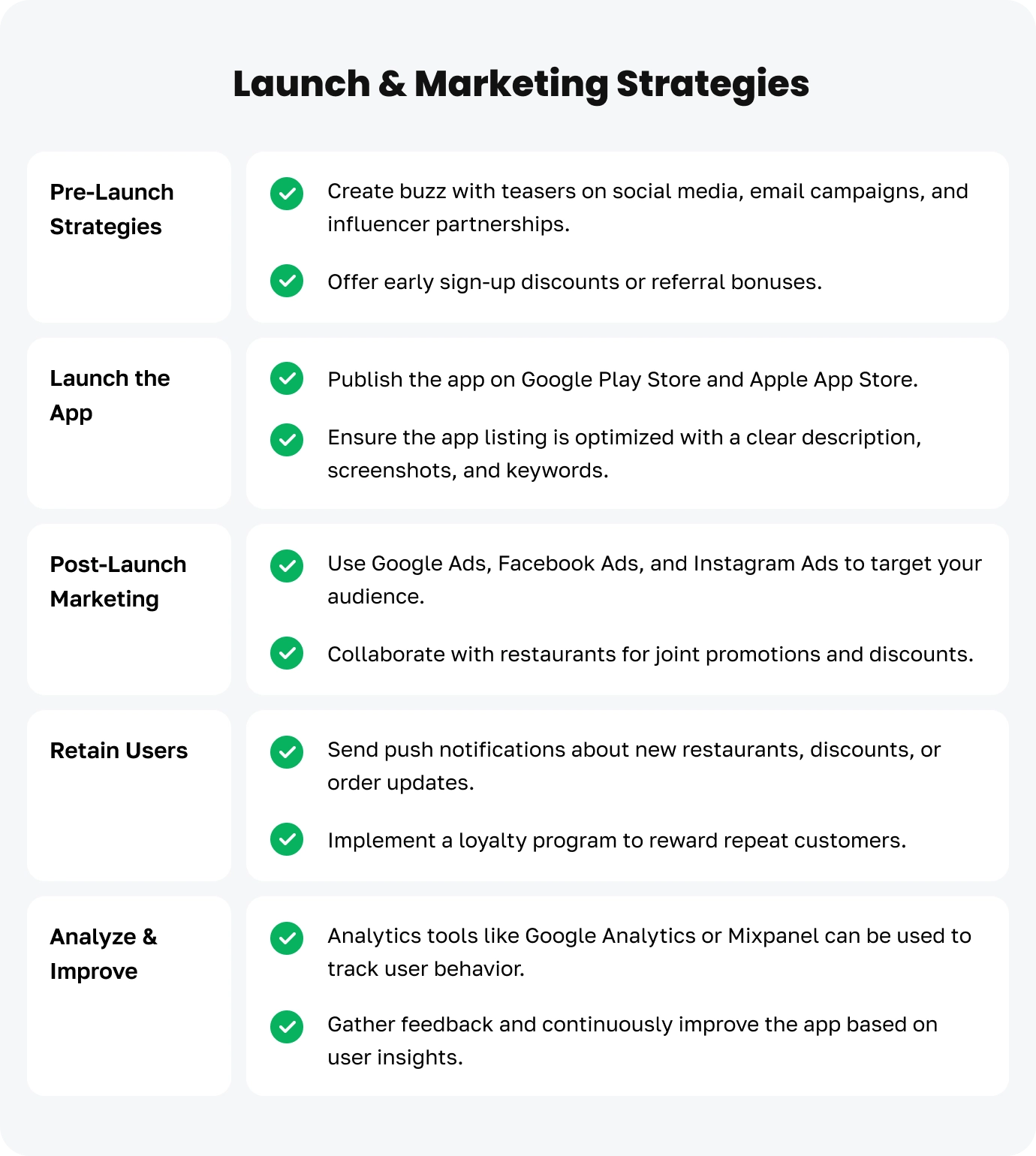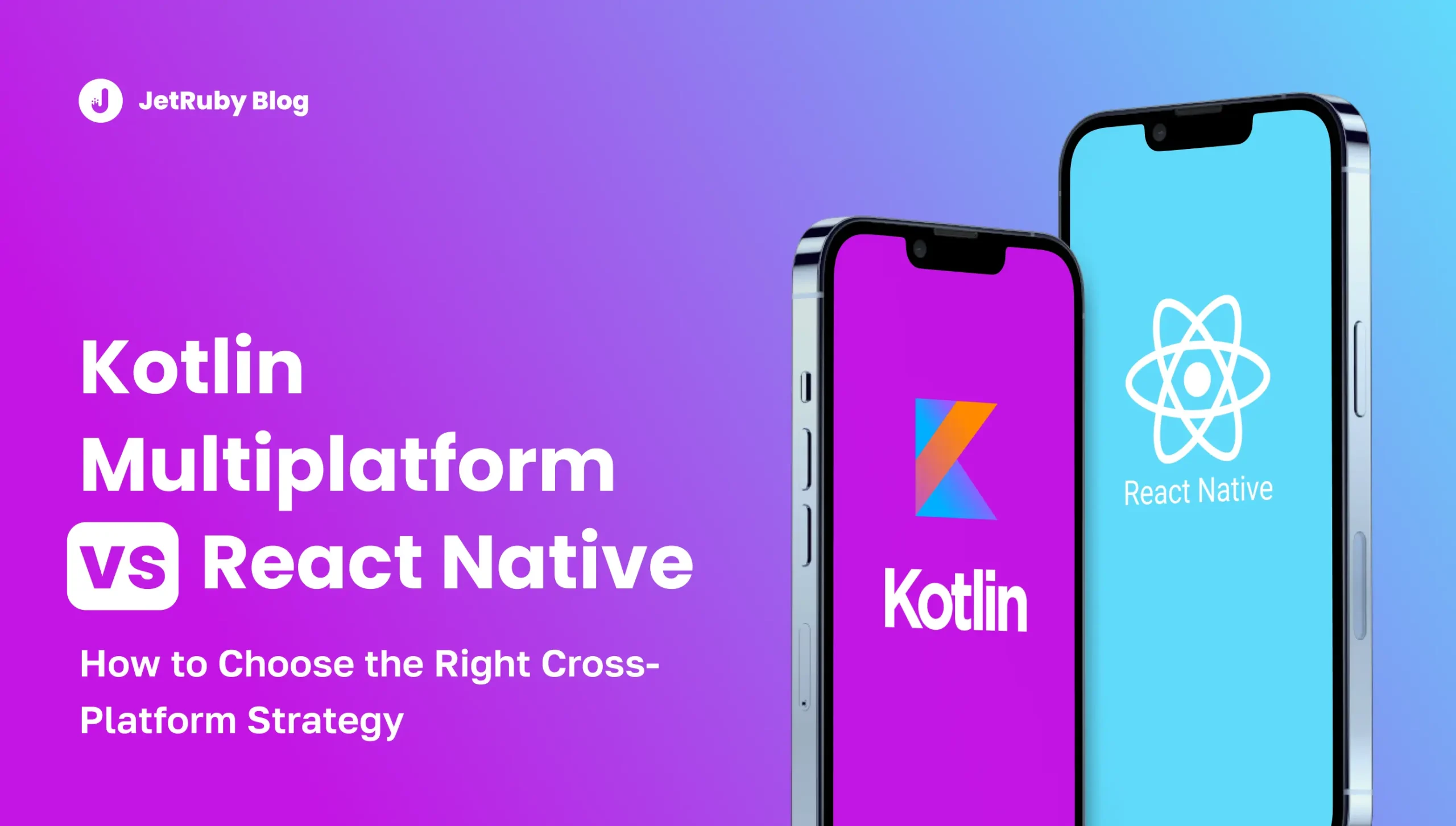Table of Contents
It’s a rainy evening after work, and cooking feels like too much effort. So, you take your phone, open a food delivery app, and your favorite meal is on its way to your place within minutes.
That’s the magic of apps like Uber Eats: they’ve made ordering food super easy.
Food delivery apps like Uber Eats have reshaped how we access and enjoy our favorite meals.
In January 2025, Uber Eats had about 4.2 million downloads. The mobile traffic for the U.S.-based food delivery company reached its highest point in April 2020, with around 8.2 million downloads globally.
Food delivery services and food delivery app development itself have become increasingly popular, particularly among younger consumers, who value the convenience and variety of options available.
Have you ever wondered what it takes to develop an app like that?
In this article, we’ll share some thoughts and our expertise in food delivery app development. We’ll cover everything from the business model to designing user-friendly features.
Uber Eats Business Model
Understanding Uber Eats’ business model requires understanding how its segments work together.
The company has three main parts that help it grow: consumers, restaurants, and delivery partners.
Uber Eats works with many restaurants to offer different types of food.
Users can look at menus and place orders through the app. Users can track their delivery drivers in real-time using GPS (and if you’d like to explore working with local map providers for certain regions, check out our guide on Navigating Chinese Map Providers).
Here’s how the Uber Eats’ business model works:
- The Uber Eats app lets users see menus from local restaurants and filter them by different options.
- Customers can select meals and add them to a cart. They can then check delivery and service fees before paying.
- They can use promo codes and choose how to pay, like cash, card, or UPI.
- Once the payment is complete, the restaurant gets the order and starts preparing the food.
- The delivery driver is then notified to pick up the order, and the restaurant confirms that the food is on its way. Both the customer and the restaurant can track the delivery in real time until the food arrives.
If you’re exploring how to develop an app or need broader assistance, take a look at JetRuby’s general App Development services for extra guidance.
Uber Eats features
Uber Eats is popular among food delivery apps because it does more than just take orders and deliver food.
Let’s look at how Uber Eats has become the industry’s leading food delivery service.
- Uber Eats has a broad network of restaurants and delivery partners, allowing easy growth.
- Its efficient processes help offer competitive prices to customers.
- Users can schedule meals for delivery at their chosen time and place.
- The restaurant manager app lets vendors quickly check performance indicators.
- Uber Eats invites users to share food photos and reviews on social media.
- Customers can opt for priority ordering for faster delivery.
- Multiple search filters help users find their favorite meals easily.
To create a food delivery app like Uber Eats, focus on making the experience personal, easy to use, and straightforward for everyone — customers, restaurants, and delivery drivers.
Here’s a simpler look at the features that can help your app stand out.
| Category | Feature | Description |
|---|---|---|
| Clean, Easy-to-Use Interface | Simple, fast navigation with personalized suggestions based on past orders. | |
| Smart Search and Filters | Search by cuisine, dish, or dietary needs like gluten-free or vegan options. | |
| Real-Time Order Tracking | Live map with driver updates to keep customers informed and build trust. | |
| Flexible Payment Options | Multiple payment methods (cards, cash, digital wallets) for easy transactions. | |
| Ratings and Reviews | Customer feedback to help others decide and improve restaurant performance. | |
| Discounts and Rewards | Loyalty points, first-time discounts, and surprise gifts to encourage repeat orders. | |
| Scheduled and Group Orders | Plan orders for later or create group orders for office lunches or family dinners. | |
| Help When You Need It | In-app chat or support for quick resolution of issues like wrong orders. | |
| Simple Onboarding | Easy sign-up and menu management to keep restaurants engaged. | |
| Real-Time Order Alerts | Instant notifications for new orders and analytics to track popular items. | |
| Promotional Tools | Highlight special deals or featured dishes to increase visibility. | |
| Integration with Existing Systems | Seamless compatibility with existing systems to save time and reduce errors. |
|
| Efficient Route Planning | Optimized routes for faster deliveries and handling multiple orders efficiently. | |
| Transparent Earnings | Clear breakdown of earnings, including tips and bonuses, to build trust. | |
| Safety and Support | SOS button and easy access to support for driver safety and satisfaction. |
A good food delivery app should create a personal, reliable, and fun experience. Whether someone is ordering a quick lunch or planning a big dinner, your app needs to make the process easy and enjoyable for everyone.
If you’d like a deeper dive into modern app development approaches, explore our take on Vue vs React: What’s Best for App Development?
A step-by-step guide to building an app like Uber Eats
To build a food delivery app like Uber Eats, you need careful planning, suitable technology, and a strong focus on user experience.
Here is a step-by-step guide that covers all the key aspects.
Market Research and Business Model
Before you start developing your app, it’s important to understand the market and decide on your business model.
If you’re exploring multiple distribution methods beyond the usual app stores, check out the Best 15 Alternative App Stores for 2025 to broaden your reach.
Choosing the Right Tech Stack
The technology you choose will determine your app’s performance, scalability, and security.
If you’re considering Ruby on Rails for reliability and speed, learn about 9 Reasons Why Ruby on Rails Is Perfect for SaaS, which applies to many startup projects.
UI/UX Design for a Seamless Experience
A well-designed app keeps users engaged and coming back. For clarity on different approaches to front-end and back-end structures, read one of our latest guides on Web App vs Website: What’s the Key Difference?
Development and Testing
The development phase brings your app to life, while testing ensures it’s bug-free and reliable.
Launch and Marketing Strategies
A successful launch and marketing plan will help you attract users and grow your app.
Cost of developing an Uber Eats clone app
Building a delivery app like Uber Eats is an exciting venture, but the real challenge lies in creating an ecosystem that works seamlessly for customers, restaurants, and delivery drivers.
Let’s break it down.
Development costs vary based on app complexity, features, and your chosen team.
A basic MVP focuses on core features like user registration, restaurant listings, order placement, and payment processing, which can keep costs low.
On the other hand, advanced features like real-time tracking, AI-driven recommendations, or multi-language support will increase expenses.
The budget is also impacted by the tech stack, design complexity, and team structure (freelancers, agencies, or in-house). Ongoing costs like server hosting, maintenance, and updates add up over time.
Once the app is ready, the real work begins.
And that means tackling some tough challenges.
Getting Restaurants on Board
Restaurants are the backbone of your platform, and convincing them to join isn’t always easy.
Many restaurants are already working with trusted players like Uber Eats, and they might be hesitant to add another platform to their list.
You’ll need to offer them something compelling, such as lower commission rates, better visibility, or unique features like advanced analytics or promotional tools. Building trust and showing them the value of your platform is key.
Building a User Base
Even the most beautifully designed app won’t succeed without users. Attracting customers in a crowded market is no small feat. You’ll need a solid marketing strategy that includes social media campaigns, influencer partnerships, and maybe even old-school tactics like flyers or local events.
Discounts, referral bonuses, or free delivery for first-time users can help attract users, but retaining them is another story. You’ll need to deliver a great experience to keep them returning consistently.
Recruiting and Managing Delivery Drivers
Delivery drivers are the bridge between your app and the customers. Finding reliable drivers, especially in competitive markets, can be tough. You’ll need to offer fair pay, incentives, and a user-friendly app for drivers to manage their orders and routes.
And don’t forget about safety, features like an SOS button or real-time support can make a big difference in keeping drivers happy and secure.
Scaling and Staying Competitive
Once the basics are in place, scaling the business is the next big challenge. Expanding to new cities, adding more restaurants, and keeping up with customer demands require careful planning and resources.
You’ll also need to stay ahead of competitors by constantly innovating – adding new features, improving delivery times, or offering unique perks.
While the app itself is important, the ecosystem around it will determine your success. It’s about building relationships, solving problems, and creating value for everyone involved. That’s where the real work and the real reward lie.
Ultimately, the cost of building the app is just the starting point. The real question is: are you ready to take on the bigger challenges that come with it?
Monetization Strategies for a Food Delivery App
Let’s discuss the money side of things.
Building a delivery app is one thing, but making it profitable is a whole different game.
The good news is that there are plenty of ways to monetize your app. You just need to find the right mix for your business model and users.
Here are some of the most effective strategies:
| Description | How it works | Why it works | |
|---|---|---|---|
| Charge restaurants a percentage of each order. | Depending on restaurant's size and services, commissions range from 15% to 30%. | Restaurants pay for exposure; scalable model—more orders mean more revenue. | |
| Charge customers a small delivery fee. | Flat fee, percentage of order, or dynamic pricing based on distance/demand. | Customers pay for convenience; keep fees reasonable to avoid frustration. | |
| Monetize visibility by offering ads to restaurants and businesses. | Sponsored listings, banner ads, or push notifications for promotions. | Low-effort revenue stream; balance ads to avoid overwhelming users. | |
| Add extra charges during high-demand periods. | Charge more during busy times to cover increased delivery costs. | Manages demand and ensures fair compensation for drivers. | |
| License your platform for others to use under their brand. | Charge a licensing fee or percentage of revenue from white-label users. | Diversifies income by leveraging your technology for additional revenue streams. | |
| Sell anonymized customer data insights to businesses. | Aggregate and sell data on preferences, ordering patterns, etc. | Businesses value actionable insights; data is a lucrative resource. | |
| Team up with other businesses to create unique offers or bundles. | Charge a fee or take a cut of revenue from collaborations. | Adds value for users while creating new revenue opportunities. |
Subscription Plans
Subscription models are gaining popularity in the food delivery space. Think of them as VIP passes for your most loyal customers or restaurants.
- For Customers: Offer a monthly or yearly subscription that gives users perks like free delivery, exclusive discounts, or early access to new features.
- For Restaurants: Provide premium plans with better visibility, advanced analytics, or lower commission rates.
- Why it works: Subscriptions create predictable, recurring revenue and encourage customer loyalty.
Monetizing a food delivery app is finding the right combination for your business and your users. The key is to balance revenue generation with user experience. After all, if your app feels too transactional or pushy, you risk losing customers.
Get that balance right, and you’ll have a sustainable, profitable business.
Plan for Success
Visualize your product, define architecture, avoid early mistakes, and ensure clear requirements, while getting accurate budget and timeline estimates for better resource planning
Get in touchFood delivery app development with JetRuby
Starting with a simple and functional MVP helps you quickly test your ideas, get feedback, and improve your product over time. This approach works in any industry, whether healthcare, e-commerce, or food delivery services.
If your product vision shifts along the way, you can adapt by learning to pivot before you start developing an MVP.
The key steps to creating an MVP are clear: provide value from the beginning, listen to your users, and be ready to make changes.
At JetRuby, we often work with businesses that already understand their needs and markets. In these cases, the MVP is about offering a ready-to-go solution that supports immediate goals such as sales growth, efficient customer management, or streamlined internal processes.
We also believe in building strong teams. If you’re curious about our approach to finding top engineers, read our article “Inside JetRuby Hiring Process for Top Engineers.”
And for broader insights on leading tech within a company, see What Is a CTO? The CTO Meaning in Business. Of course, keeping your team happy is crucial, so you might also find tips in Top 13 Steps to Reduce Employee Turnover useful.
Our approach typically includes
- Every business needs quick solutions. We focus on speed and quality and deliver tangible results within 3-4 months.
- We focus on developing core functions and then expanding them.
- The MVP is a foundation for future features like data analytics and customer retention tools.
- We collaborate with our client’s teams to ensure the MVP aligns with their business goals and systems, helping to improve workflows and long-term vision.
We at Jetruby have developed several food delivery services to life. Saffron Cooks, an app for a premium food delivery service bringing a restaurant-like dining experience, is on the list.
Our work on this project included:
- Analyzing the current business model and offering practical solutions for marketing campaigns and technical issues.
- Improving the existing code.
- Introducing a loyalty program with gift cards.
- Fixing code vulnerabilities to protect personal data.
At JetRuby Agency, we help businesses quickly turn their ideas into reality. We understand that deadlines can be tight, and this is where we excel. We focus on developing Minimum Viable Products (MVPs) and provide practical solutions that work right away.
We build a strong foundation to support your growth in the future.
We’re here to ensure you’re ready to take on the market confidently.
Feel free to reach out if you have questions or need help building your delivery app. We’re excited to help you create the next food delivery success story.
